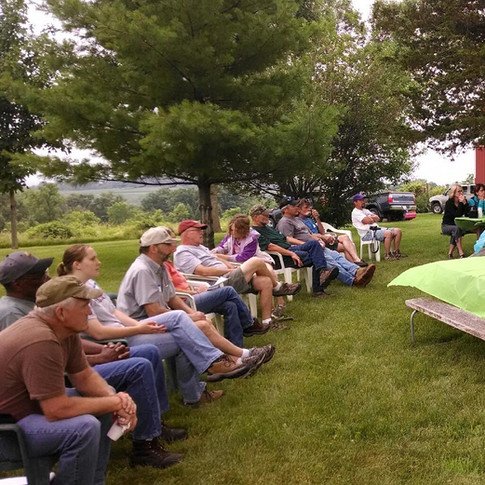
Let's Bring Back The Bobwhite


Minnesota
Understanding the Habitat Needs of Upland Birds



As has been previously mentioned, the habitat needs are very similar for pheasants and other upland birds. Certainly, pheasants and many other songbirds and animals will benefit from any efforts to try to improve habitat for upland birds and quail. There are some very general things to understand when improving habitat for all upland birds and animals. But, there are also a handful of things to understand so that your habitat is excellent for quail. They have a few particular needs that are important to know about.

Habitat Considerations for all Upland Game Birds
-
Sources of food for each season of the year. Most importantly is spring and winter. Spring is when they need plenty of protein and nutrients through the breeding, nesting and brood rearing seasons. Winter is when all animals struggle the most. If natural food or crop strips are in short supply, supplemental feeding goes a long way.
-
Bugs. All upland birds need bugs through the spring. Bugs are the most important food source through the spring and summer for adult birds and chicks. There is no better protein source for upland birds. You need to know how to draw bugs. Bugs love wildflowers and bugs love weeds. If you plant wildflowers, you should design such that there are species blooming throughout the spring, summer and early fall. Weeds? Bugs love ragweed! Allergy sufferers do not, but bugs love ragweed. And pheasants know it. Bugs also love velvet leaf and pigweed and lambs quarters. If you can leave a few areas take over with ragweed and pigweed, you will be creating a buffet of bugs for many birds to find and stay healthy. Wildflowers are also very good but can take several years to develop a good field of wildflowers that will bloom throughout the year. Bugs are a bird’s best friend and you need to think of weeds as a conservationist’s best friend. If you plant some corn, maybe a few rows nearest to the fenceline edges do not need to get Round-Up protection. It’s an idea! And, it has been very effective.
-
Cover is extremely important to upland birds. Mixed heights grasses (big bluestem, little bluestem, Indian grass, switch grass) provide excellent cover throughout much of the year for roosting, sunning, breeding, nesting and eating…bugs (lots of bugs).
-
Other important cover made up of shrubs and other woody cover, including spruces, is very important to protect from the wind and snow during the fall and through the winter. Smaller strips in fencerows help, but it is also helpful to have some bigger stands of trees, shrubs and other dense cover. Ideally, your shrubs would also provide a food source. Great shrubs to plant include highbush cranberry, wild plum, serviceberry, elderberry and gray dogwood. Please know that sumac is a good shrub with plenty of food and provides great cover. Although these are fairly aggressive, existing stands should not be taken down.
-
Turning some of your shrub areas into a bramble can be very helpful, especially during the nesting season. Plant raspberry and blackberry. You can also plant some wild grapes or American bittersweet to get some vine structure to help protect birds from predators. Some spruce and red cedar can also provide important cover and will help keep predators from easily moving in and grabbing birds. Not everyone feels positively about red cedar (quite similar to the perceptions of ragweed), as they are aggressive in spreading, but they do produce important cover and food for upland birds.
-
Water is important. Somewhere on your property or very near it needs to be a source for water. Small pools of even stagnant water works fine. Ideally this water would not include farm run-off with any herbicides. Make use of existing low areas and consider letting them return to the muddy areas they once were. These small areas often do the trick for most of the year by providing water and additional shelter around the edges.
-
Any of our Quail Forever members can be helpful to you in education of habitat requirements and will provide ideas on what you can do to your property. Just ask and we’re here to help.


